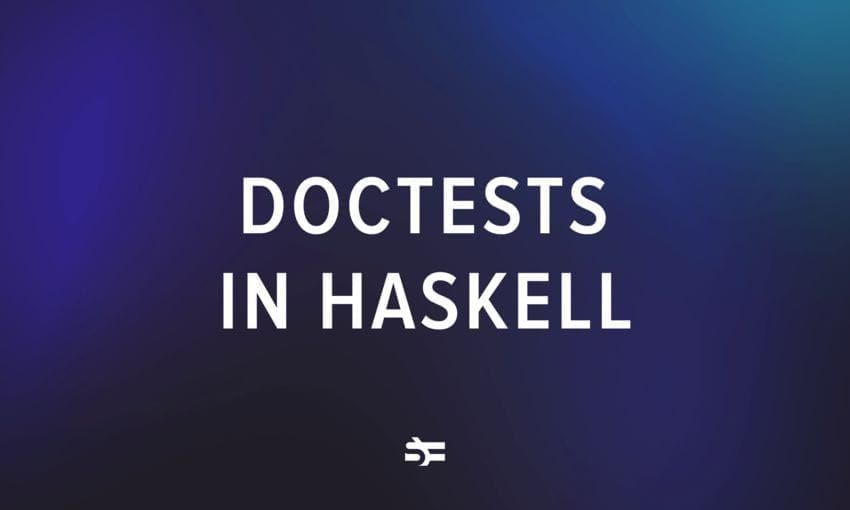Blockchain has been transforming various industries, enabling companies to significantly enhance security, reduce risks, increase transparency, and automate numerous business processes.
In this blog post, we provide a detailed overview of blockchain applications and offer advice on how to start building one. We cover the fundamentals of this technology and some of its most interesting use cases.
What is a blockchain?
Blockchain is a type of distributed ledger technology (DLT) that records transactions across multiple computers in a way that ensures the data is secure, transparent, and tamper-proof.
It is a collaborative, unchangeable ledger that simplifies transaction records and asset tracking within a business network.
Each transaction is grouped into a “block,” which is then linked to a chain of previous blocks, creating a chronological and unalterable record. When a transaction occurs, it is broadcast to a network of computers (nodes) for validation. These nodes use consensus algorithms, such as Proof of Work or Proof of Stake, to agree on the validity of the transaction.
- Proof of Work (PoW): In PoW, miners compete to solve complex mathematical puzzles to validate transactions and add them to the blockchain. This process requires significant computational power and energy, making it secure but also resource-intensive.
- Proof of Stake (PoS): PoS reduces the energy consumption associated with PoW by allowing validators to propose new blocks based on the amount of cryptocurrency they own and are willing to “stake” as collateral. and are willing to “stake” as a collateral. This mechanism is more energy-efficient.
Once validated, the transaction is added to a block, which is then appended to the existing blockchain. The decentralized nature of blockchain means that no single entity controls the entire chain.
The cryptographic principles underpinning blockchain technology are crucial to its integrity. Each block contains a unique code called a “hash,” generated based on the block’s contents. Any alteration to the block’s data changes its hash, immediately signaling tampering. Moreover, each block contains the hash of the previous block, linking them together and forming a secure chain. This interconnectedness makes it extremely difficult for any single block to be altered without affecting the entire chain.
Additionally, the distributed ledger is constantly updated and synchronized across all nodes, ensuring that all participants have the latest version. This synchronization and the consensus mechanism collectively maintain the blockchain’s trustworthiness. From a business perspective, blockchain facilitates peer-to-peer value exchanges without the need for a middleman.
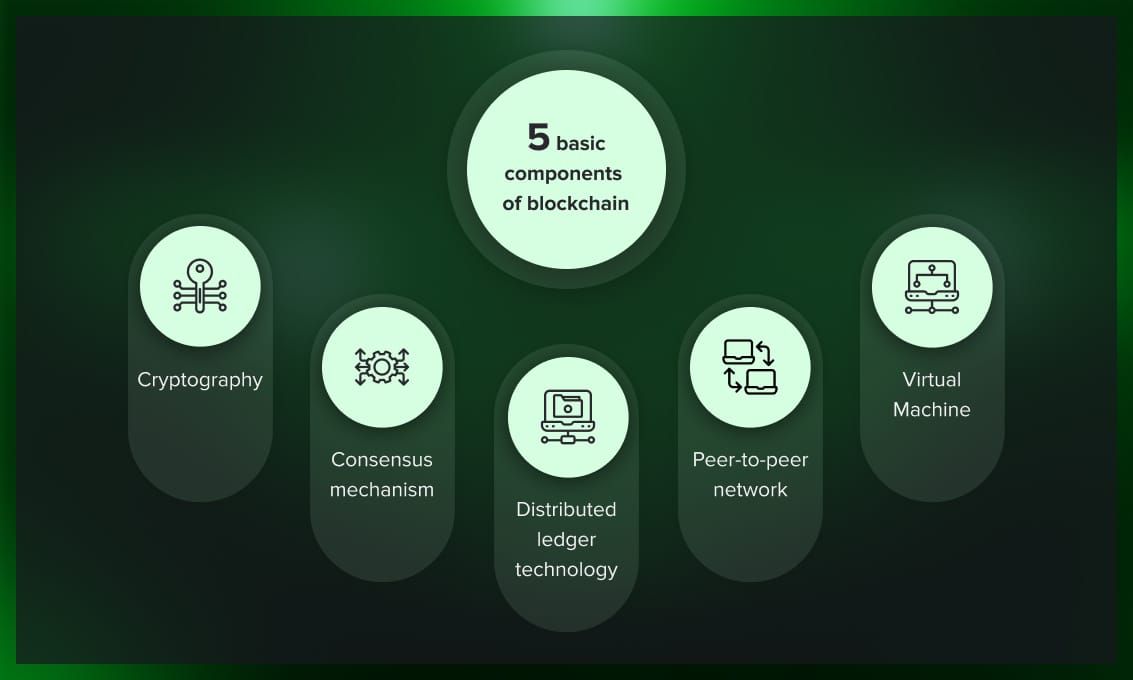
Types of blockchains
There are three main types of blockchains based on their privacy model.
- Public blockchains: Open to anyone and are fully decentralized. Bitcoin and Ethereum are prime examples of public blockchains. In a public blockchain, anyone can participate as a node, validate transactions, and view the transaction history. This openness fosters transparency and trust but can also lead to scalability and privacy challenges.
- Private blockchains: Access is limited to a specific group of participants, often within a single organization. These blockchains offer more control over who can participate and access the data, providing enhanced privacy and faster transaction speeds. However, they lack the level of decentralization that public blockchains offer, which can affect trust and transparency.
- Consortium blockchains: A hybrid model, combining elements of both public and private blockchains managed by a group of organizations. This collaborative approach allows for shared control and decision-making. Consortium blockchains are particularly useful in industries where multiple organizations need to work together, such as supply chain management, finance, and healthcare.
What are the stages of a blockchain application development?
The blockchain app development process involves several stages, from ideation to the maintenance of the final product.
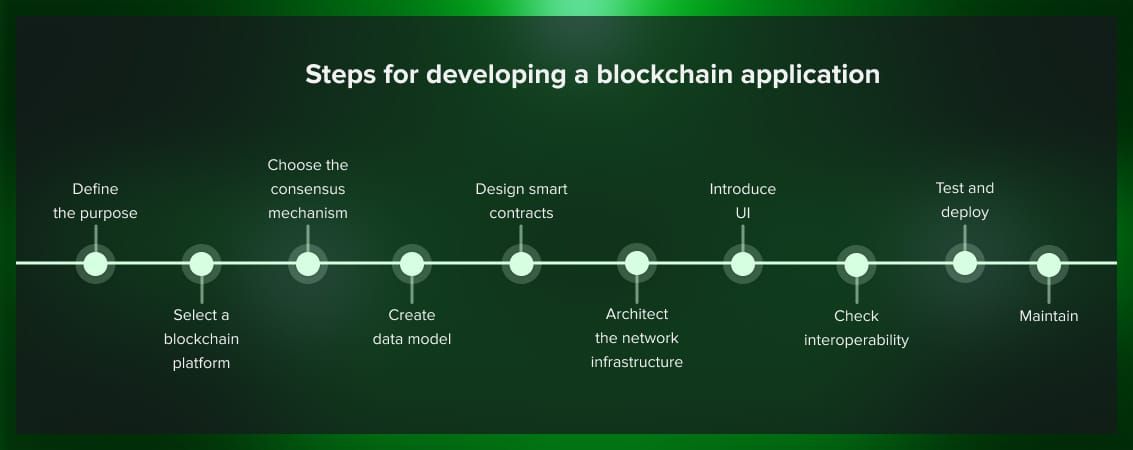
Stage 1: Planning and research
The process of developing a blockchain application begins with identifying the problem you aim to solve.
Define the features and functionality of your app, ensuring they address the identified problem and meet audience needs. Finally, establish your product-market fit (PMF) and set clear project parameters, including budget, expectations, and business objectives.
Stage 2: Choosing a blockchain development team
In the second stage of developing a blockchain application, selecting the right development team is crucial and involves multiple considerations. First, assess the vendor’s experience in relevant technologies, such as blockchain programming, smart contracts, dApp architecture, cryptography, and security, to ensure technical proficiency. The team’s reputation, evidenced by client testimonials and reviews on platforms like Clutch, the Manifest, and Good Firms provides insight into their reliability and quality of work. Additionally, contact them directly and pay attention to their communication and project management skills.
Note: There is a difference between general software development and blockchain development. The latter requires proficiency in cryptography, P2P networks, distributed systems, smart contracts, and security audits.
Stage 3: Blockchain app development
In the third stage, several critical elements come together to ensure a robust and functional product. The process begins with selecting the most relevant blockchain platform that aligns with the application’s goals and technical requirements.
Smart contract development is a key focus, involving the creation of contracts that define the app’s logic and operational rules. This stage also encompasses comprehensive infrastructure development, addressing both back-end and front-end components to ensure seamless functionality and user experience. Additionally, integrating external systems, APIs, or third-party services is essential to enhance the app’s capabilities and provide a more comprehensive solution.
Stage 4: Product testing and deployment
In this stage, quality assurance (QA) is conducted, beginning with various testing procedures such as functional, integration, and end-to-end testing to ensure each component functions correctly and seamlessly, and concluding with overall architecture and security audits. Smart contract audits are crucial to ensure that the contracts perform as intended.
Another important aspect is UX, where you have to verify the smooth operation of all user interface elements. Detailed documentation is a necessary part of any outsourced IT project. It serves as a helpful resource for in-house developers and users, providing answers to questions about how the blockchain project is designed, used, maintained, or modified.
Stage 5: Maintenance and support
Blockchain maintenance and support involve ongoing activities to ensure a blockchain network’s effective operation, security, and efficiency.
Key aspects include:
- Node management (updates, monitoring).
- Network performance (scalability, latency).
- Security (vulnerability patching, incident response).
- Consensus mechanism maintenance.
- Smart contract auditing and updates.
- Data integrity (validation, backup).
- Regulatory compliance.
- User support (technical support, documentation).
- Performance tuning (optimization, load balancing).
- Governance (protocol changes, decision-making).
What blockchain platforms are commonly used for app development?
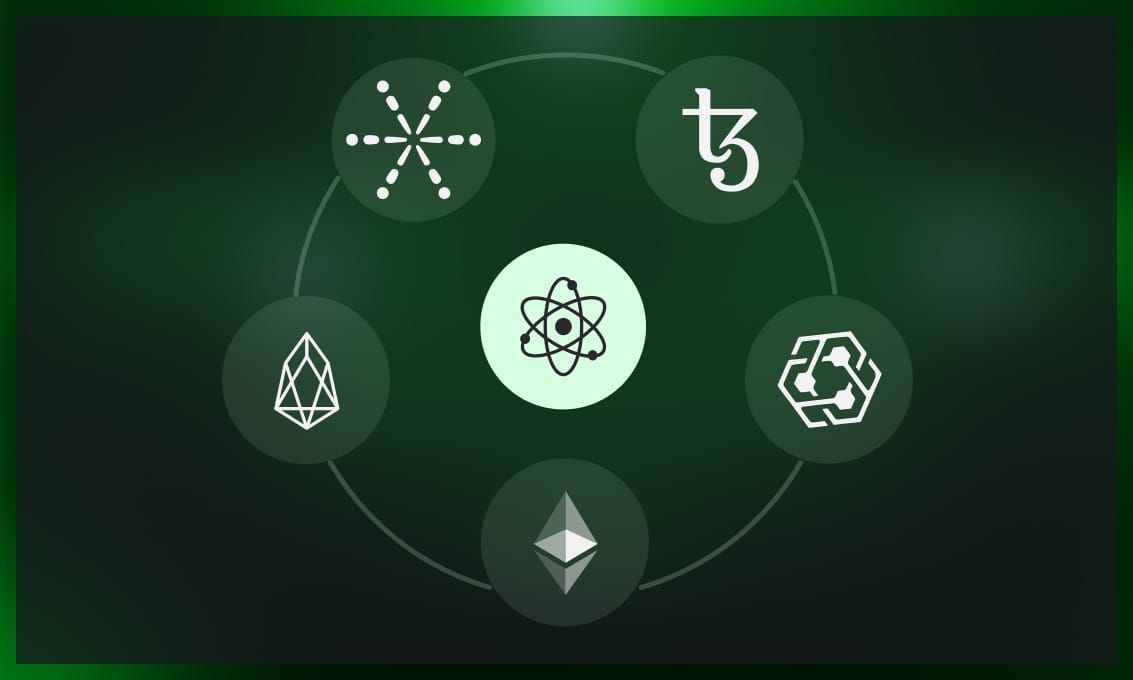
Numerous platforms are available for developing blockchain solutions, but the following are the main ones for blockchain/DLT development:
- Ethereum: Ethereum is an open-source platform, also serving as an operating system, used for blockchain app development and ICOs with smart contract capabilities. As it is more versatile and adaptable than Bitcoin, it has become the preferred choice for blockchain app development businesses.
- Tezos: Tezos is an open-source blockchain that facilitates peer-to-peer transactions and serves as a platform for deploying smart contracts. It is a decentralized blockchain that can evolve by upgrading itself. Stakeholders govern the protocol and approve upgrades, making it a highly adaptable platform. It is designed to facilitate formal verification, a technique that mathematically proves the correctness of the code governing transactions, thus ensuring a high level of security.
- EOS: EOS provides smart contract functionality, decentralized application hosting, and decentralized storage for enterprise solutions. It addresses scalability concerns seen in blockchains like Ethereum and Bitcoin and eliminates user fees.
- Multichain: Multichain allows you to design and deploy private blockchain solutions for use within or across several businesses.
- Hyperledger: Hyperledger is an open-source framework for developing complex blockchain software applications. It supports building blockchain solutions for various applications, such as IoT-based systems or supply chain management.
What components does blockchain architecture have?
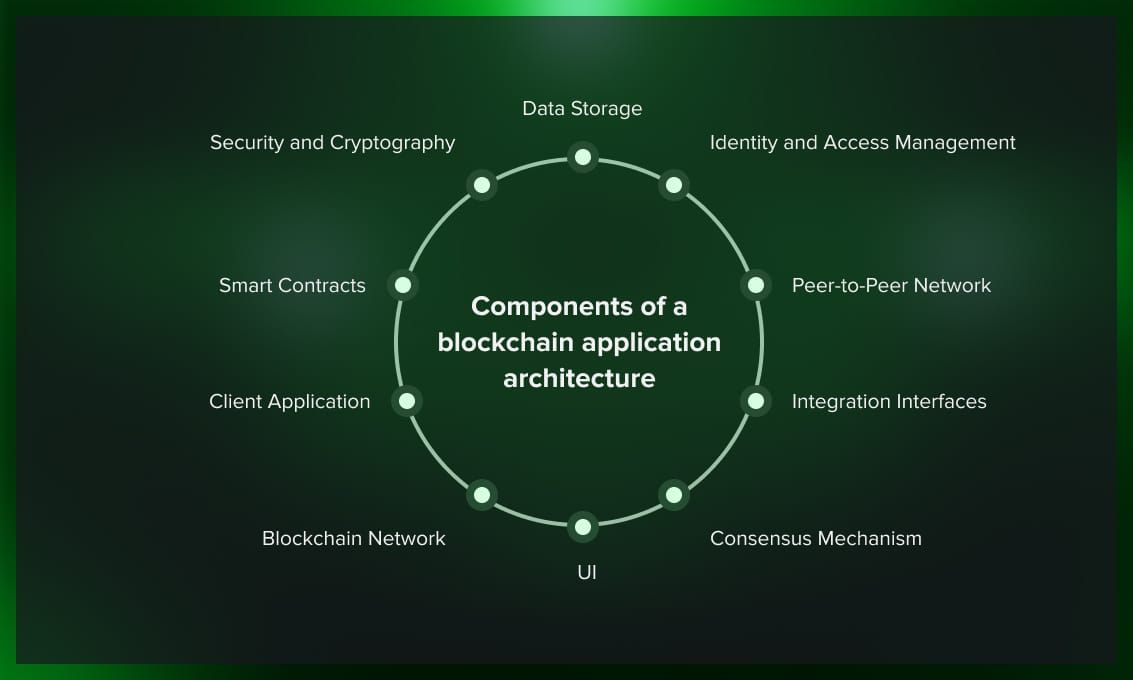
User interface (UI): This part provides a user-friendly interface for interaction with the blockchain application, incorporating web or mobile apps, dashboards, and controls for tasks like transaction creation, data access, and account management.
Client application: As the intermediary between the user and the blockchain network, the client application manages transactions, integrates wallets, retrieves data, interacts with smart contracts and third-party APIs, such as exchanges and analytics tools, to provide a comprehensive ecosystem for the user.
Smart contracts: These self-executing programs are pivotal in the blockchain application. They automate and enforce agreements by executing predefined actions when specific conditions are met and ensuring transparency, security, and trust within the blockchain users.
Blockchain network: This component is the backbone of the software system. It’s made up of nodes that keep a decentralized and unchangeable record of transactions. Blockchain development involves collecting and verifying transactions via smart contracts, packaging them into a block, and adding it to the chain.
Consensus mechanism: This defines the protocols for achieving agreement among nodes in the blockchain network, ensuring all participants validate and concur on the validity and order of transactions.
Peer-to-peer network: This element enables communication and data sharing among nodes within blockchain, supporting the dissemination of transactions, blocks, and other network-related information across the decentralized network.
Data storage: This component is responsible for managing and retrieving blockchain data. It stores information in blocks linked to form an immutable chain. Depending on the type of the blockchain, storage can be distributed across multiple nodes or used as a file system for efficient data retrieval.
Identity and access management (IAM): This part ensures secure and regulated access to the blockchain application by managing user identities, authentication, authorization, and permissions to enforce data privacy and control user activities within the system.
Security and cryptography: This component encompasses a variety of techniques and protocols, safeguarding the integrity, confidentiality, and authenticity of the blockchain application through cryptographic algorithms for data encryption, secure key management, digital signatures, and communication protocols.
Integration interfaces: These interfaces allow the blockchain application to integrate with external systems and APIs, enabling communication with third-party services, external databases, or other blockchain networks for interoperability and integration with existing systems.
Which programming languages are best suited for blockchain app development?
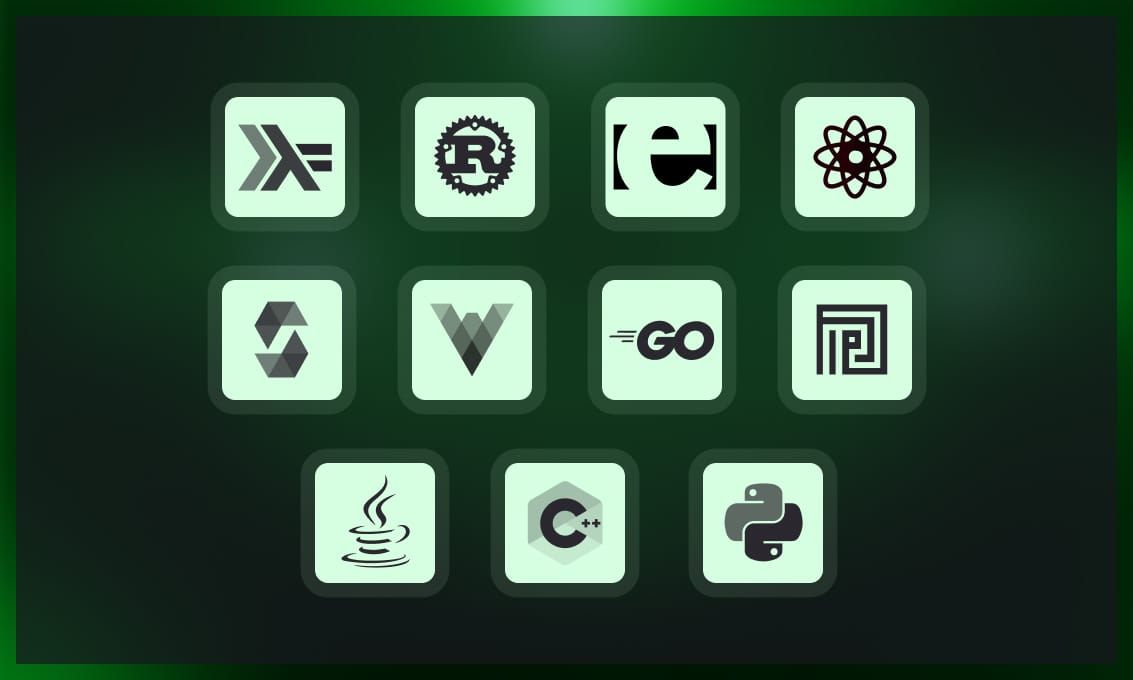
Functional programming languages are particularly well-suited for blockchain app development due to their functional nature. Compared to OOP languages, FP languages are more effective for implementing mathematical functions, validation algorithms, and creating a transparent environment for blockchain development.
A blockchain keeps track of changes in a state using an append-only data structure, with each new block adding to the state. Functional programming is great for managing these changes, allowing for easy rollbacks and updates. Additionally, functional programming is ideal for creating and compiling smart contracts.
When choosing a language for building a blockchain app, you have the consider the following aspects:
- Blockchain platform: The platform you are targeting influences the language choice.
- Project requirements: Specific needs and goals of your project.
- Team expertise: The proficiency of your development team in certain languages.
- Security and scalability: The level of security and scalability required.
Below, we explain the specifics of several languages that are best for blockchain development.
Haskell
Haskell is a great option for blockchain apps due to its strong emphasis on immutability, type safety, and mathematical precision. A major blockchain platform that leverages Haskell is Cardano— its smart contract language, Plutus, is based on Haskell.
Rust
Known for its memory safety and exceptional performance, Rust is an excellent choice for blockchain development. Projects like Polkadot and Solana use Rust to build blockchain infrastructure and smart contracts.
Erlang
The Erlang language is highly effective for blockchain app development due to its exceptional support for concurrency, fault tolerance, and distributed systems. These features are vital for blockchain applications that require reliable, real-time processing and high availability. Erlang’s lightweight process model and efficient message-passing capabilities enable it to handle a large number of transactions simultaneously without performance degradation.
Michelson
Michelson is a domain-specific language used on the Tezos blockchain for writing smart contracts. It is a stack-based language designed with safety and formal verification in mind.
Simplicity
Simplicity is used for building smart contracts in blockchain applications. It is a straightforward programming language that utilizes static analysis to ensure contracts are efficient and secure, making it easier for developers to verify and optimize their code before deployment.
Solidity
A statically typed programming language, Solidity is primarily used to create smart contracts executed on the EVM. It allows for the easy implementation of self-regulated business logic in smart contracts, ensuring a non-repudiable and authoritative record of transactions.
Vyper
Vyper is a language for Ethereum smart contracts. It is more secure and readable than Solidity due to the elimination of certain features and using a Python-like syntax. It’s ideal for developers who prioritize security and simplicity.
Go (Golang)
Go is used for building blockchain infrastructure and tools. Ethereum 2.0, Binance Smart Chain, and Hyperledger Fabric, among others, use Go for various components due to its simplicity and efficiency.
Plutus
Plutus is the smart contract development language for the Cardano blockchain. It combines Haskell for contract logic and Marlowe for financial contracts, allowing for high-level and secure contract development.
Java
Java is used in some blockchain platforms like Corda, which is designed for enterprise blockchain solutions. It’s suitable for businesses requiring privacy and fine-grained control over data.
C/C++
These languages are used in developing blockchain core protocols and certain smart contract platforms. Bitcoin’s core codebase is primarily written in C++, while platforms like EOS also support C/C++ for smart contract development.
Python
Python is used for blockchain development, particularly in research, scripting, and tool-building. Libraries like Web3.py allow Python developers to interact with Ethereum networks.
Which industries can benefit from blockchain implementation?
Blockchain applications serve various purposes, including digital identity verification and supply chain management. Let’s explore some most interesting use cases across industries.
Finance and banking
Blockchain improves the security of transactions, reducing the risk of fraud and cyberattacks. Blockchain’s transparency and traceability also help in regulatory compliance and audit processes.
- J.P. Morgan implemented blockchain technology to enhance funds transfers between banking institutions globally. Their solution, called Confirm, facilitates improved information exchange related to payments, reducing the number of rejected or returned transactions caused by mismatched payment details. This helps lower costs for both sending and receiving banks.
The company even tested the world’s first bank-led tokenized value transfer in space. They executed a blockchain transaction between satellites using smart contracts on a blockchain network.
Insurance
Blockchain reduces fraud in the insurance industry by guaranteeing that all parties have access to the same, unalterable information.
- Deloitte is introducing blockchain to insurance groups. Following a health and life insurance study, Deloitte discovered that blockchain technology can safeguard health records, facilitate agreements through smart contracts, and detect fraudulent claims. Consequently, insurance companies can implement Deloitte’s blockchain strategies to foster transparent relationships with patients and customers.
Healthcare
With blockchain, healthcare organizations can easily share data with other network users without jeopardizing the integrity and security of the data.
- Medicalchain uses blockchain to securely manage health records. It enables medical practitioners, hospitals, and laboratories to request patient information with a verifiable record of origin, while protecting the patient’s identity from external parties.
- Avaneer, supported by Aetna, Anthem, Cleveland Clinic, and other healthcare leaders, is committed to enhancing healthcare efficiency through blockchain technology. Avaneer employs a public ledger to facilitate improved claims processing, secure healthcare data exchanges, and ensure provider directories are consistently maintained and up-to-date.
Real estate
The real estate sector can securely bypass documents by using blockchain, where land titles can be recorded, tracked, and transferred accurately and reliably.
- Propy is a platform enabling secure exchange of property titles and funds between buyers and sellers, eliminating the need for intermediaries.
Retail and supply chain
Blockchain allows retailers to trace products from origin to shelf, ensuring authenticity and reducing fraud.
- Walmart has adopted blockchain technology to improve supply chain management. They use blockchain to track the origin and provenance of products, ensuring transparency and building trust with customers. Additionally, Walmart has implemented an automated blockchain-based freight and payment network to address data inconsistencies and streamline the payment process
Gaming
In-game assets and currencies are tokenized through blockchain, allowing players to own, trade, and sell their digital treasures outside the game’s ecosystem. Moreover, blockchain enables interoperability between different games and across multiple platforms.
- Theta Network is a decentralized video streaming platform enabling users to earn tokens for sharing their bandwidth and exchange information securely.
- Gods Unchained is a blockchain-based trading card game where players can collect, trade, and battle with digital cards. The ownership and scarcity of cards are recorded on the Ethereum blockchain, giving players true ownership and the ability to sell or trade their cards outside of the game.
FAQ
Below, we answer some of the typical questions regarding blockchain applications development services.
Do I need to understand blockchain to invest in blockchain app development services?
A basic understanding of blockchain technology is certainly useful and would help you select an appropriate blockchain app development team that will walk you through the entire process, from concept to deployment. A key indicator of a good team includes brand recognition, years of experience, reputation, customer feedback, and the ability to simplify complex concepts for everyone on the team. This clarity and guidance are valuable reasons to invest in custom blockchain development.
How can I migrate an existing application to blockchain?
To migrate an app to the blockchain, you have to start with comprehensive planning to identify which parts of the application benefit from decentralization and determine data storage requirements. Then, choose a blockchain that aligns with your performance and security needs, such as Ethereum or Tezos for public use or Hyperledger Fabric for private use.
The next step is developing and testing smart contracts and performing security audits to ensure integrity. Conduct rigorous testing in a staging environment and deploy the application gradually, starting with non-critical components to monitor performance and address issues incrementally.
If you need more skills and expertise in the blockchain development field, consider hiring a blockchain development consulting company. With a team of seasoned blockchain professionals, Serokell can assist you at any stage of the blockchain development process.
How to conduct a blockchain security audit?
To conduct a blockchain audit, define the scope to identify the objectives and components for review, such as smart contracts, nodes, and data integrity. Gather all relevant documentation, including technical specifications, smart contract code, blockchain protocols, and transaction logs.
Once the research is completed, perform a thorough code review of the smart contracts to identify vulnerabilities and ensure proper functionality. Conduct a security assessment to evaluate the blockchain’s encryption, consensus mechanisms, and node security. Analyze transaction logs and network performance to identify inefficiencies or bottlenecks. Ensure the blockchain complies with relevant legal and regulatory standards.
Finally, compile a detailed report of the findings, highlighting identified issues, risks, and improvement recommendations. While it requires additional costs, the expertise, objectivity, resources, and compliance makes third-party independent blockchain audits more beneficial, providing additional guarantees to your customers.
Summary
Blockchain development is at the forefront of many innovative solutions. With the introduction of distributed ledgers, businesses can remove the middleman and operate in a transparent and immutable manner. However, blockchain app development is a complex process where expert advice or independent security audits can save you not only money but also your business reputation.
Check out other materials on blockchain development on our blog:
Blockchain vs. DLT: What’s The Difference?



.jpg)
.jpg)
.jpg)
.jpg)
